One mole of an ideal diatomic gas goes from a to c along the diagonal path in Fig. 21-29. The scale of the vertical axis is set by Pab=5.0kPaandpc=0.50kPa, and the scale of the horizontal axis is set by Va=2.0m3 During the transition, (a) what is the change in internal energy of the gas, and (b) how much energy is added to the gas as heat? (c) How much heat is required if the gas goes from a to c along the indirect path abc?
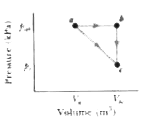
(a)−2.0×104j,(b)5.5×104(c)−14.5×1030j=−15KJs
Topper's Solved these Questions
- THE FIRST LAW OF THERMODYNAMICSBOOK - RESNICK AND HALLIDAYCHAPTER - THE FIRST LAW OF THERMODYNAMICSEXERCISE - PRACTICE QUESTIONS ( SINGLE CORRECT CHOICE TYPE )
48 Videos
- THE FIRST LAW OF THERMODYNAMICSBOOK - RESNICK AND HALLIDAYCHAPTER - THE FIRST LAW OF THERMODYNAMICSEXERCISE - PRACTICE QUESTIONS ( MORE THAN ONE CORRECT CHOICE TYPE )
9 Videos
- THE FIRST LAW OF THERMODYNAMICSBOOK - RESNICK AND HALLIDAYCHAPTER - THE FIRST LAW OF THERMODYNAMICSEXERCISE - CHECK POINT
8 Videos
- TEMPERATURE, ZEROTH LAW OF THERMODYNAMICS AND THERMAL EXPANSION BOOK - RESNICK AND HALLIDAYCHAPTER - TEMPERATURE, ZEROTH LAW OF THERMODYNAMICS AND THERMAL EXPANSION EXERCISE - PRACTICE QUETIONS (Integer Type)
4 Videos
- THE KINETIC THEORY OF GASESBOOK - RESNICK AND HALLIDAYCHAPTER - THE KINETIC THEORY OF GASESEXERCISE - PRACTICE QUESTIONS
72 Videos
Similar Questions
One mole of an ideal monoatomaic gas is taken from A to C along the path ABC . The temperature of the gas at A is T0 . For the process ABC :
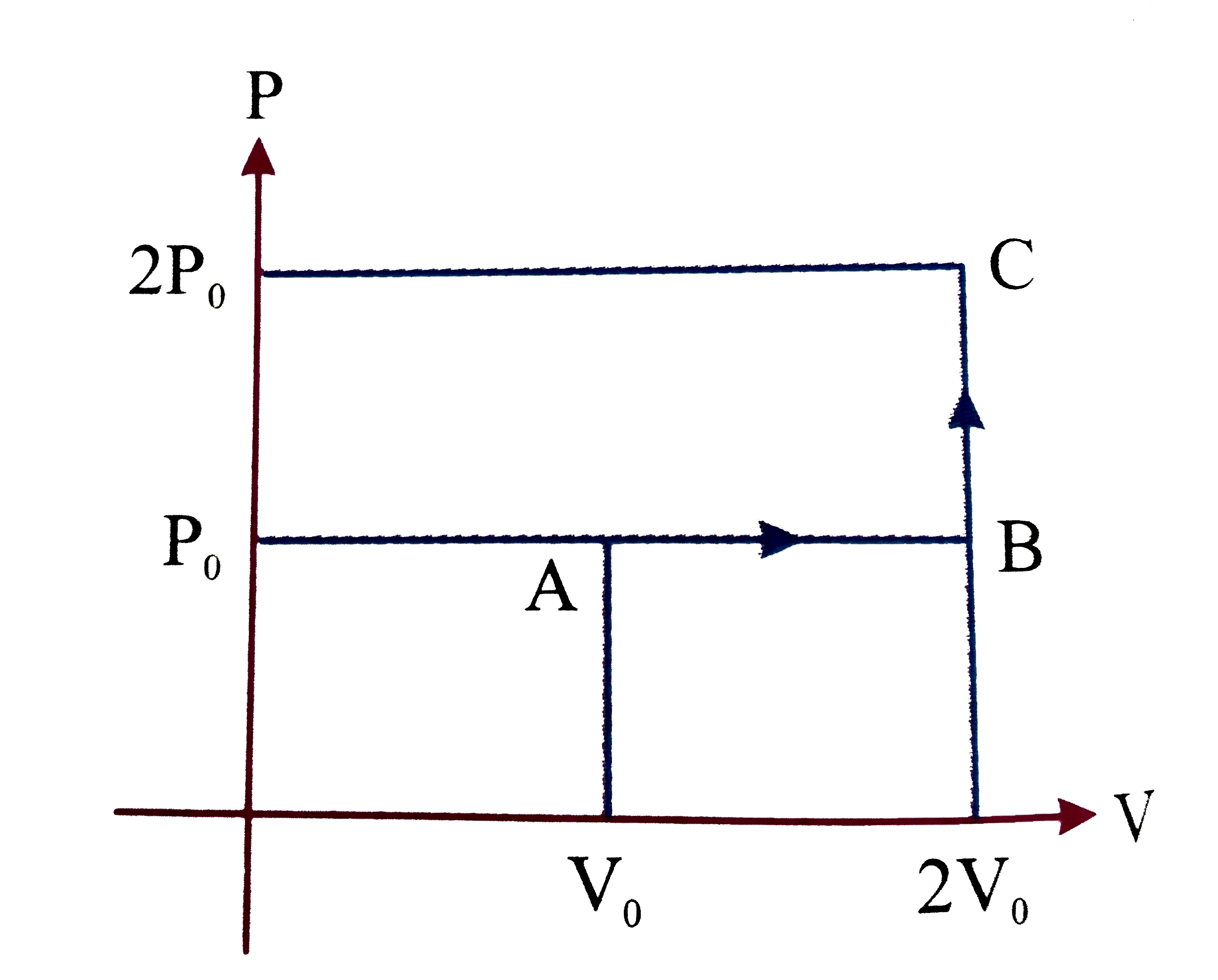
View SolutionA sample of an ideal gas is taken through the cyclic process abca shown in Fig.21-33. The scale of the vertical axis is set by pb=7.5kPaandpAc=2.5kPa.At point a, T = 280 K. (a) How many moles of gas are in the sample? What are (b) the temperature of the gas at point b, (c) the temperature of the gas at point c, and (d) the Higure 21-33 Problem 30. net work done by the gas during the cycle, and (c) the net energy added to the gas as heat during the cycle?

View Solution
Knowledge Check
One mole of an ideal monoatomaic gas is taken from A to C along the path ABC . The temperature of the gas at A is T0 . For the process ABC :
 Awork done by the gas is RT0Bchange in internal energy of the gas is 112RT0Cheat absorbed by the gas is 112RT0
Awork done by the gas is RT0Bchange in internal energy of the gas is 112RT0Cheat absorbed by the gas is 112RT0
 Dheat sbsorbed by the gas is 132RT0 .
Dheat sbsorbed by the gas is 132RT0 .
(R=uniyersal gas constant)One mole of an ideal diatomic gas undergoes a transition from A to B along a path AB as shown in the figure. The change in internal energy of the gas during the transition is
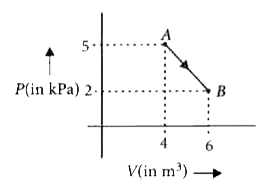 A20 JB−12kJC20 kJD−20kJ
A20 JB−12kJC20 kJD−20kJOne mole of an ideal diatomic gas undergoes a transition from A to B along a path AB as shown in (figure). The change in internal energy of the gas during the transition is (γ=3/5)
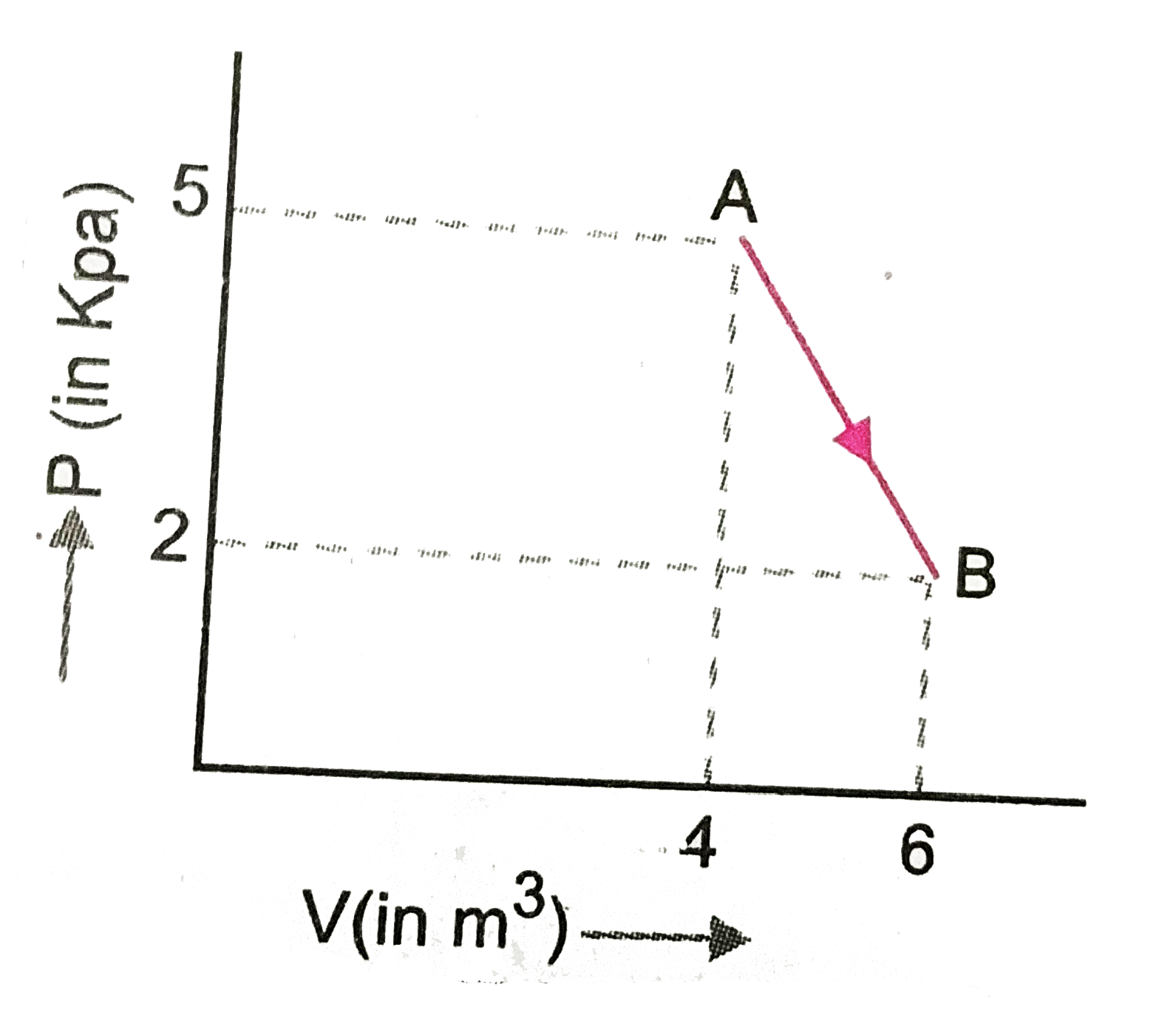 A−20KJB20 JC−12KJD20 KJ
A−20KJB20 JC−12KJD20 KJ
One mole of an ideal diatomic gas undergoes a transition from A to B along a path AB as shown in the figure,
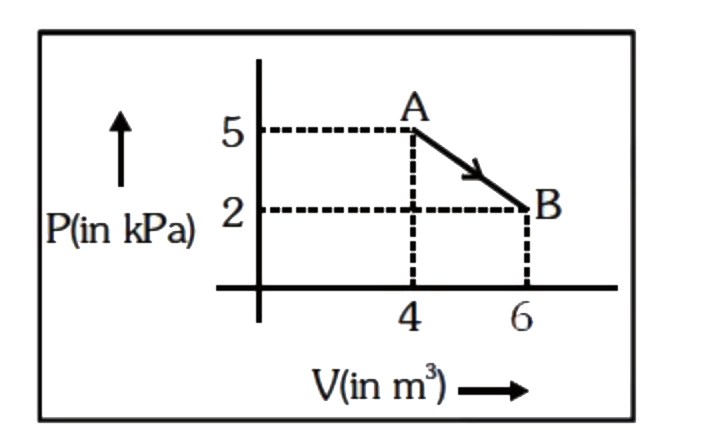
The change in internal energy of the gas during the transition is :
View SolutionOne mole of an ideal diatomic gas undergoes a transition from A to B along a path AB as shown in the figure
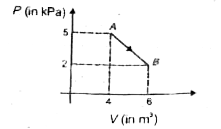
The change to internal energy of the gas during the transition is
View SolutionOne mole of an ideal diatomic gas undergoes a transition from A to B along a path AB as shown in the figure

The change to internal energy of the gas during the transition is
View Solutionthe pressure of a gas change linearly with volume from 10kPa, 200 cc to 50 kPa, 50 cc. (a) calculate the work done by the gas, (b) what is the change in the internal energy of the gas ?
View SolutionOne mole of an ideal diatomic gas undergoes a transition from A to B along a path AB as shown in the figure,

The change in internal energy of the gas during the transition is :
View Solution
